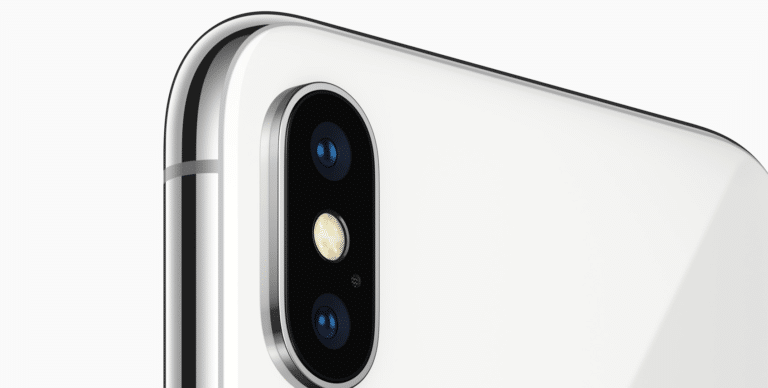
This is the first in a series of articles that examines how the so called Four Horsemen of Tech — Apple, Google, Facebook and Amazon — are positioned for augmented reality. Microsoft, the dark horse whose work with AR/MR brings it back into the race, will represent the final stretch of the series.The first installment examines Apple.
Evidence continues to stack up that Apple’s next iPhone will be built around augmented reality. The rumored iPhone 8 — or “iPhone X to commemorate the device’s 10th year — will likely launch at Apple’s Fall hardware event with an $800 – $1,000 price tag.
The first signs of AR orientation came from hints dropped by Tim Cook last year. Then we heard Robert Scoble’s prediction that AR will rule the next iPhone, followed by lots of supply chain rumors that point to AR-centric components in the works.
Famed Apple-watcher Gene Munster recently got in on the action, telling Forbes, “Apple’s focus in the near-term is on nailing augmented reality on the iPhone over the next five years.” Altogether, an AR outcome is looking increasingly likely.

The Why
Perhaps more important than the if is the why. Answering that question can indicate where Apple will take AR. And knowing that can inform startups and investors which way the technological winds will blow — as Apple has proved to influence.
This question of why goes back to why tech giants ever really enter emerging areas: to protect, boost or diversify a core product. And Apple’s core product is selling iThings. The iPhone is where it makes most of its (quite healthy) margins.
And Apple knows — as we’ve covered several times — that the short term opportunity for AR will be smartphones, rather than smart glasses. The global installed base now stands at 2.6 billion units, giving it the nearer-term addressable market scale.
That’s great news for Apple because not only is the smartphone slab format where it hangs its hat, but the company is seeing iPhone sales growth mature. An AR-centric iPhone 8 or iPhone X will boost that, as will a premium price point.
This plan also lets apple fill the gap during the period before AR glasses become accessible. By accessible, we mean the 1-2 cycles of Moore’s law that need to turn before components come down in price and size to make them tenable for mass consumption.
This brings Apple closer to the question of what comes after the iPhone, as its next cash cow. Meanwhile it will do what it does best: sexy hardware through industrial design, while optimizing margins through scale and supply chain management.

The How
As for what the prospective iPhone will be and do, that’s the fun part of the discussion. There’s the likely Scoble angle that it will be a thin layer of transparent glass to house an AR interface. And content/apps will follow the iOS developer network playbook.
Gene Munster meanwhile predicts more powerful chips and 3D sensors, as well as a curved OLED screen. Following the supply chain, there’s evidence that Taiwan Semiconductor is in mass production of the next iteration (A11) Apple chips.
And of course there’s the pastime of tracking acquisitions to paint a picture of functionality we may see in an AR-packing iPhone X. That includes Metaio, Primesense, Flyby Media, and more recently RealFace, which does computer-vision driven facial recognition.
As we know, computer vision is at the heart of AR, in terms of mapping a point cloud on which to array images that interact with the world in dimensionally accurate ways. And the Optics in the iPhone 7+ hint at the stereoscopic capabilities for AR depth of field.
As for the types of AR content and use cases, those will vary and be determined by the third party developer network. But they’ll likely be seeded by Apple’s own batch of apps, just like the iPhone 1 was (think: maps, photos, weather, messaging, etc.).
One thing is for sure: the use cases will be consumer-oriented to stay true to Apple’s DNA. That compares to Microsoft — likewise staying true to its DNA — already showing signs of positioning Hololens as an enterprise play (yes, we’ll look at MSFT in this series).

The Wild Card
In addition to graphically oriented AR — the modality in which it’s mostly discussed and visualized — we have a longstanding prediction that Apple could be already pioneering an under-discussed form of AR: Audible.
This looks at AR in a different context, involving informational overlays that are sound waves instead of photons. In other words, getting informed about your surroundings through an ambient whisper in your ear instead of a graphics in front of your eyes.
The seeds for this vision have already been planted with the AirPods, as well as other players like Here One. But before apple gets there, it has to condition the use case of an all-day wearable, which is precisely what it’s now doing.
Then it has to seed the content marketplace with enough “stuff” to make the experience worthwhile. Right now that means Siri, which isn’t going to cut it. But a third party developer network a la iOS, could populate the audio app marketplace.
That could be everything from local information (think: audio tours and Yelp reviews), or background information about the person you’re about to meet with. Essentially we all become secret service agents with persistent whispers of new intel.
Or at least that’s what we know now, and the speculation and triangulation we can draw from it. One thing is certain: there will be a lot to watch and it will happen quickly.
For a deeper dive on AR & VR insights, see ARtillry’s new intelligence subscription, and sign up for the free ARtillry Weekly newsletter.
Disclosure: ARtillry has no financial stake in the companies mentioned in this post, nor received payment for its production. Disclosure and ethics policy can be seen here.
Header image credit: Apple
